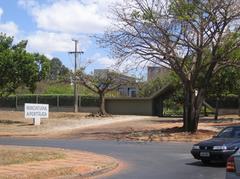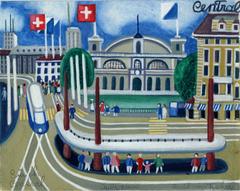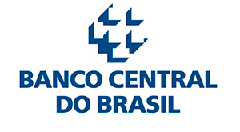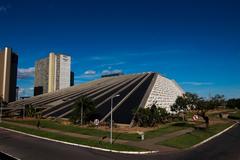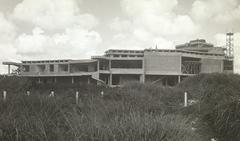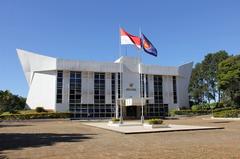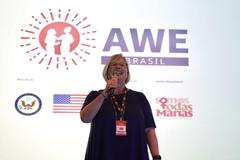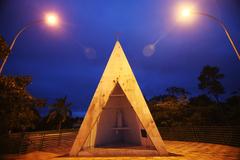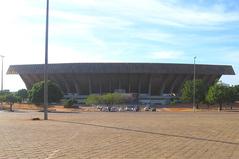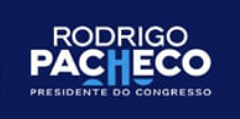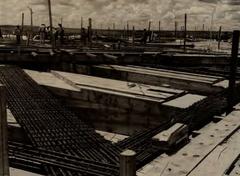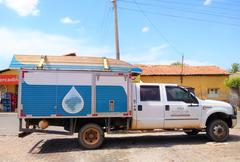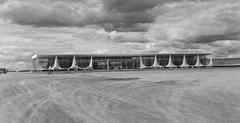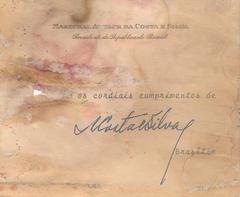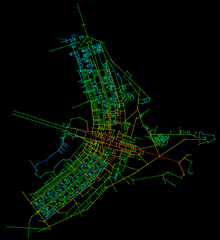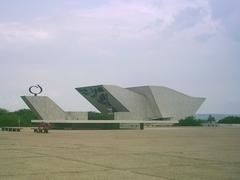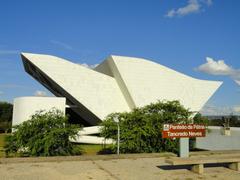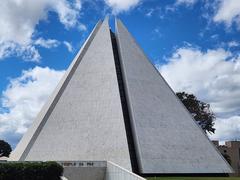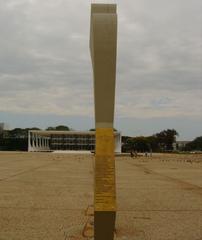Embassy of South Korea in Brasília: Visiting Hours, Tickets, and Visitor Information
Date: 15/06/2025
Introduction
The Embassy of South Korea in Brasília serves as a vital diplomatic and cultural bridge between Brazil and South Korea. Since diplomatic ties were established in 1959, the embassy has evolved into a center for political dialogue, economic partnership, and cultural exchange. Located in Brasília’s diplomatic sector, the embassy not only provides consular services but also hosts a variety of cultural events, educational programs, and exhibitions that showcase Korean heritage and contemporary culture.
This comprehensive guide covers everything prospective visitors need to know, including the embassy’s history, visiting hours, ticketing policies, accessibility, consular services, and cultural activities. Whether you require visa assistance, wish to participate in a Korean cultural event, or are simply fascinated by the diplomatic relationship between Brazil and South Korea, this report will ensure you are well-prepared for your visit.
For authoritative information and updates, consult the Embassy of South Korea in Brasília’s official website and other reputable sources (Embassies.info, Wikipedia).
Table of Contents
- Introduction
- Establishment of Diplomatic Relations
- Evolution and Location of the Embassy
- Key Milestones in Brazil–South Korea Relations
- Visiting the Embassy: Practical Information
- Diplomatic and Cultural Significance
- Notable Leadership
- Frequently Asked Questions
- Related Resources & References
- Summary and Final Tips
Establishment of Diplomatic Relations
Brazil and South Korea formalized diplomatic relations in October 1959, marking the beginning of a significant partnership (Wikipedia). Brazil became the first Latin American nation—and the eighth worldwide—to recognize the Republic of Korea, laying the groundwork for broad-based exchanges.
South Korea’s first Latin American embassy opened in Rio de Janeiro in 1962. Brazil established its embassy in Seoul in 1965, and both missions later relocated to Brasília following the capital’s development (FUNAG PDF).
Evolution and Location of the Embassy
The Embassy of South Korea is currently situated at SEN 801, Lote 14 - Asa Norte, Brasília, within the city’s diplomatic sector (Embassies.info). This location places the embassy among numerous international missions, facilitating its role as a hub for diplomatic engagement and cultural exchange.
Key Milestones in Brazil–South Korea Relations
Early Migration and Economic Cooperation
The 1960s and 1970s saw Korean migration to Brazil, with many settling in São Paulo and Rio de Janeiro (FUNAG PDF). The Korean community, initially engaged in agriculture, later expanded into entrepreneurship and urban industries.
Bilateral cooperation deepened with the establishment of a Joint Commission in 1989, paving the way for agreements in science, technology, and air services throughout the 1990s.
High-Level Visits and Strategic Agreements
Notable visits, such as South Korean President Kim Young-sam’s 1996 trip to Brazil and Brazilian President Fernando Henrique Cardoso’s 2001 visit to South Korea, resulted in strategic agreements including peaceful nuclear cooperation (Wikipedia). Ongoing discussions on a Free Trade Agreement between Mercosur and South Korea further highlight the evolving partnership.
Visiting the Embassy: Practical Information
Location and Transportation
Address:
SES 811, Lote 43, Brasília - DF, 70429-900, Brazil
Located in the Setor de Embaixadas Sul, the embassy is easily accessible from the city center and Brasília International Airport.
How to Get There:
- By Car: Brasília’s road network provides easy access, with nearby parking (limited during busy periods).
- By Public Transport: Several bus lines serve the embassy area.
- By Taxi/Ride-Share: Services like Uber and 99 are widely available.
Accessibility:
The embassy is wheelchair accessible, with ramps and accessible restrooms. Visitors needing assistance are advised to contact the embassy in advance.
Visiting Hours and Entry
- Monday to Friday: 9:00 AM – 5:00 PM
- Lunch Break: 12:00 PM – 1:30 PM
- Consular Services: 9:00 AM – 12:00 PM
Visitors should bring a government-issued photo ID for entry. Security screenings are standard, and photography inside the embassy is generally not allowed.
Appointments:
Consular services require an appointment. Walk-ins are limited. For cultural events, check the event listing for registration requirements.
Consular Services
- Visa Processing: Tourist, business, student, and work visas (Visa Portal).
- K-ETA: Electronic travel authorization available for eligible nationalities (K-ETA Information).
- Document Legalization: Authentication of legal and academic documents.
- Assistance for Korean Nationals: Passport renewal, emergency aid, and registration of vital events.
Diplomatic and Cultural Significance
The embassy is a focal point for bilateral cooperation and cultural exchange. It supports economic partnerships, with over 120 Korean companies operating in Brazil and a vibrant Korean community of more than 50,000 people (Wikipedia). The Trade and Investment Promotion Framework (TIPF) signed in 2023 underscores shared interests in green energy and digital technology.
Cultural Activities
The embassy organizes:
- Korean Film Festivals (with Portuguese subtitles)
- K-Pop Contests and Performances
- Korean Food Fairs
- Traditional Arts Workshops (hanji, calligraphy, hanbok experiences)
- Language Classes and Literature Clubs
- Heritage Exhibitions (UNESCO sites, music, artifacts)
Events are usually free, though some require registration. For the latest schedule, consult the embassy’s official website.
Notable Leadership
The embassy is led by Ambassador Lim Ki-mo, who directs diplomatic, economic, and cultural initiatives (Embassies.info).
Frequently Asked Questions (FAQ)
Q: What are the embassy’s visiting hours?
A: Monday to Friday, 9:00 AM – 5:00 PM. Consular services: 9:00 AM – 12:00 PM.
Q: Are tickets required for embassy events?
A: Most events are free but may require advance registration. Check the embassy’s website for details.
Q: Is the embassy accessible for people with disabilities?
A: Yes, the embassy offers accessible entrances and restrooms.
Q: Can I take photos inside the embassy?
A: Photography is generally not permitted inside, except during designated cultural events and in specific areas.
Q: What languages are spoken at the embassy?
A: Korean, Portuguese, and English are commonly spoken.
Related Resources & References
- Embassy of South Korea in Brasília – Official Website
- Embassies.info – Embassy of South Korea in Brasília
- Wikipedia – Brazil–South Korea Relations
- South Korea Visa Portal
- K-ETA Information
- FUNAG – Brazil-Asia Relations (PDF)
- Embassies.net – South Korea Embassy in Brazil
Summary and Final Tips
The Embassy of South Korea in Brasília is a key institution in the Brazil–South Korea partnership, offering comprehensive consular support, vibrant cultural programming, and a welcoming environment. Its prime diplomatic sector location makes it accessible for both planned visits and participation in cultural events. Visitors are encouraged to:
- Schedule appointments for consular services in advance.
- Bring required identification and documents.
- Check the embassy’s website for current visiting hours and event details.
- Follow health and security protocols during their visit.
Stay informed about embassy news and events by following official channels and leveraging digital tools like the Audiala app. For further information, consult the embassy’s official website and trusted resources (Embassies.info, Wikipedia).
For further details and planning resources, visit the online platforms linked above.
